The Economics and Statistics Division maintains archives of previous publications for accountability purposes, but makes no updates to keep these documents current with the latest data revisions from Statistics Canada. As a result, information in older documents may not be accurate. Please exercise caution when referring to older documents. For the latest information and historical data, please contact the individual listed to the right.
<--- Return to Archive
For additional information relating to this article, please contact:
November 08, 2018PROVINCIAL ECONOMIC ACCOUNTS 2017 The Provincial Economic Accounts provide the official estimates of Nova Scotia's GDP and select indicators. The estimates released today include revisions for the years 2015 and 2016 and the first estimate of expenditure and income for 2017. Nova Scotia real GDP growth was revised down from 1.4 per cent to 0.7 per cent in 2015 but offset with an upward revision in 2016 from 0.8 per cent to 1.5 per cent growth. Nationally, real GDP growth was revised down 0.3 percentage points in both 2015 and 2016 as the downturn was more broadbased and income was slower to recover than previously reported.
In 2017, real gross domestic product (GDP) increased 3.0 per cent in Canada with every province and territory reporting growth for the first time since 2010. Alberta (+4.4%) reported fastest growth among the provinces after declines in 2015 and 2016. Eight of ten provinces reported faster growth in 2017 than 2016. Nova Scotia real GDP grew by 1.5 per cent in 2017, the same pace as 2016.

For Canada, household spending growth of 3.6 per cent drove the economy in 2017. Real (adjusted for price changes) household consumption was up in all provinces in 2017. Nova Scotia household final consumption growth of 2.8 per cent was the largest in Atlantic Canada while growth in British Columbia (+4.6%) and Ontario (+3.9%) was the highest among all the provinces. Government final consumption expenditures increased by 2.1 per cent in both Canada and Nova Scotia.
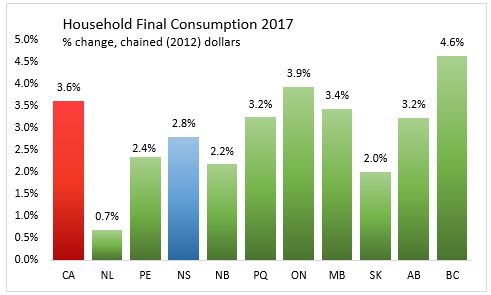
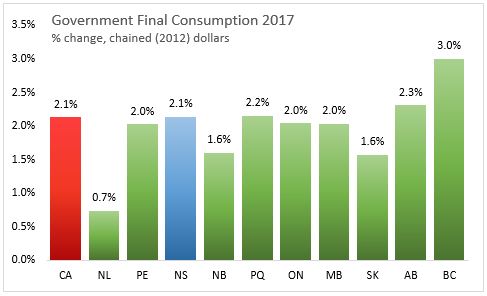
Residential expenditures were up 2.4 per cent in Canada with Prince Edward Island (+25.6%) leading in terms of percentage growth. Seven provinces reported higher residential investment in 2017 while declining in Newfoundland and Labrador, Saskatchewan and British Columbia. Non-residential structures and machinery and equipment investment increased 2.5 per cent in Canada. Lower activity reported in Newfoundland and Labrador was due to less work on Hebron offshore oil project than in 2016. Higher investment in Prince Edward Island resulted from upgrades on New Brunswick to Prince Edward Island power cables while the increase in British Columbia was due to investment in oil and gas engineering construction projects.

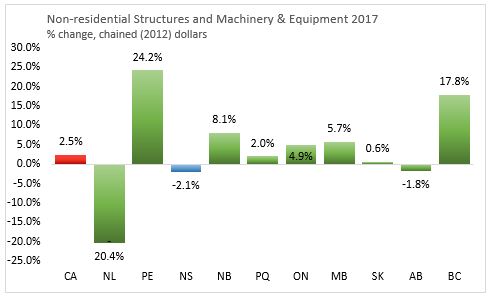

Exports of goods and services were up in nine provinces but down for in Newfoundland and Labrador. Higher oil prices lifted oil and gas extraction and exports from Alberta, energy exports also lifted growth in New Brunswick and Saskatchewan. Imports also increased in nine provinces while declining in Newfoundland and Labrador.
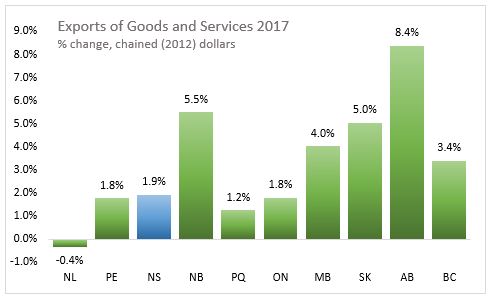
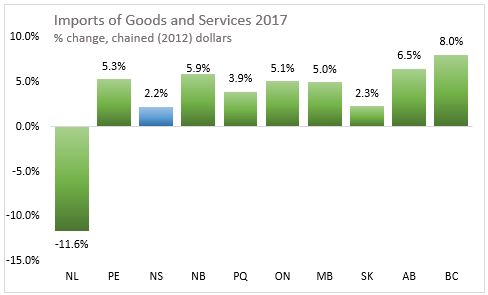
For 2017, nominal GDP (volumes and price change) grew 5.6 per cent in Canada and 2.9 per cent in Nova Scotia. Alberta (+10.0%) and British Columbia(+6.9%) registered the fastest nominal GDP growth among the provinces.
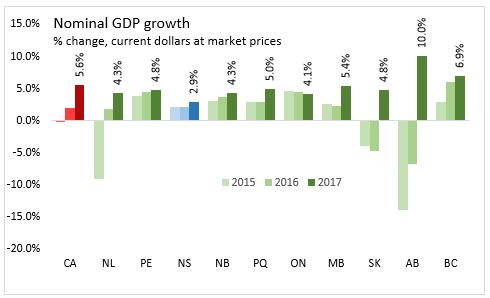
Employee compensation was up in all provinces in 2017 and rose 4.3 per cent nationally. The fastest employee compensation growth occurred in British Columbia, Prince Edward Island and Central Canada. The net operating surplus of corporations increased in all provinces with an increase of 20.1 per cent in Canada. The recovery in Alberta led to an increase of 247.5 per cent while Ontario had smallest growth at 1.8 per cent in 2017.
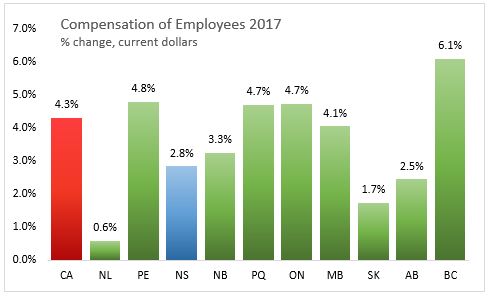
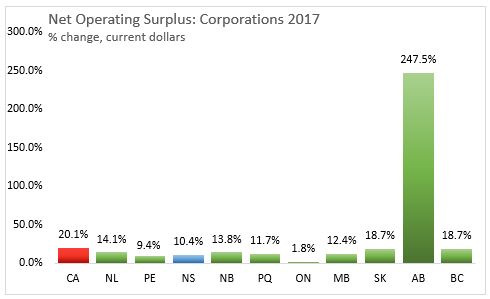
Source: Provincial and territorial economic accounts, 2017
<--- Return to Archive